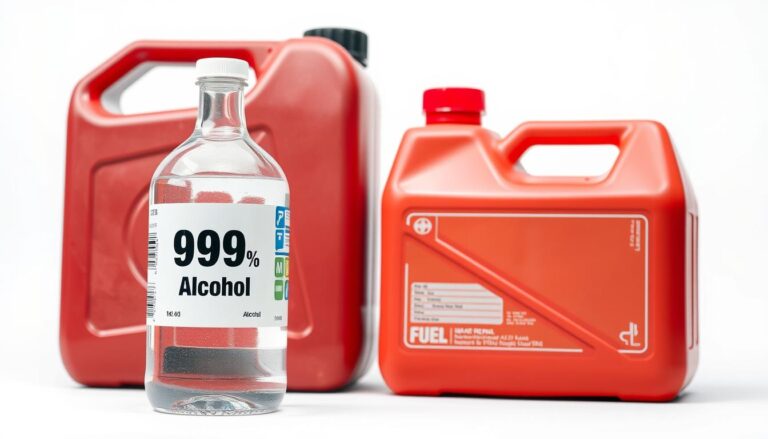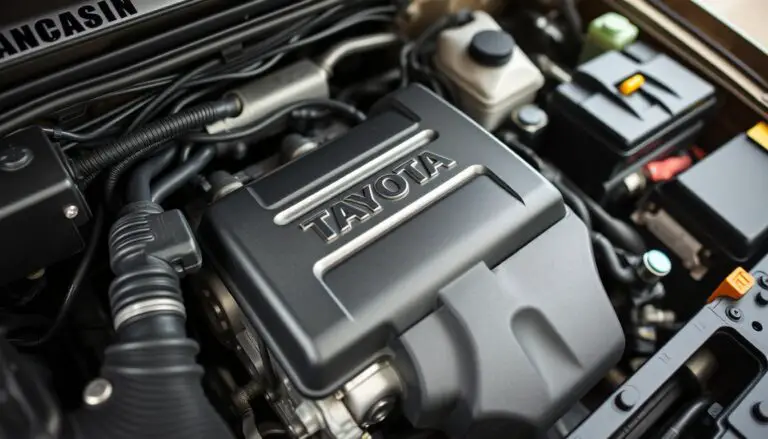The Nissan Murano is a popular crossover SUV known for its comfort and performance. A crucial aspect of maintaining its performance and longevity is ensuring the transmission is properly serviced.
Understanding the transmission fluid capacity is vital for car owners who want to maintain their vehicle’s health. Using the correct type and amount of CVT fluid can significantly impact the vehicle’s overall performance and lifespan.
This article aims to provide a comprehensive overview of the Nissan Murano’s transmission fluid capacity, helping owners and enthusiasts understand the importance of proper maintenance.
Key Takeaways
- Understanding the importance of transmission fluid capacity for your Nissan Murano.
- The role of CVT fluid in maintaining vehicle performance.
- How to properly service your Nissan Murano’s transmission.
- The impact of incorrect transmission fluid capacity on vehicle longevity.
- Tips for maintaining your vehicle’s overall health.
The Importance of Proper Transmission Fluid Levels
The transmission fluid level plays a crucial role in ensuring the longevity and efficiency of your Nissan Murano’s transmission system. Transmission fluid is essential for lubricating the transmission’s components, cooling the system, and facilitating smooth gear shifts.
How Transmission Fluid Affects Vehicle Performance
Transmission fluid directly impacts the Nissan Murano’s performance by enabling smooth acceleration and gear transitions. Adequate fluid levels ensure that the transmission operates under optimal conditions, reducing wear and tear on the system. As noted by automotive experts, “Proper transmission fluid maintenance is key to preventing premature transmission failure.”
Consequences of Incorrect Fluid Levels
Incorrect transmission fluid levels can lead to serious consequences, including increased wear on transmission components, overheating, and potentially catastrophic transmission failure. Low fluid levels can cause the transmission to overheat, while overfilled transmissions can lead to foaming and reduced performance. Maintaining the correct fluid level is crucial to avoid these issues and ensure the longevity of your Nissan Murano’s transmission.
Nissan Murano Transmission Fluid Capacity Specifications
Understanding the transmission fluid capacity is crucial for maintaining your Nissan Murano. The capacity can vary depending on the model year.
First Generation (2003-2007)
The first generation Murano requires approximately 8.1 liters of transmission fluid.
Initial Fill and Drain Capacities
The initial fill capacity is around 8.1 liters, while the drain and refill capacity is slightly less.
Second Generation (2009-2014)
The second generation also uses approximately 8.1 liters of transmission fluid.
CVT Fluid Requirements
The CVT used in these models requires a specific type of fluid to ensure optimal performance and longevity.
| Model Year | Transmission Type | Fluid Capacity (Liters) |
|---|---|---|
| 2003-2007 | CVT | 8.1 |
| 2009-2014 | CVT | 8.1 |
It’s essential to consult your owner’s manual for the most accurate information regarding transmission fluid capacity and type.

Recommended Transmission Fluid Types for Nissan Murano
Understanding the recommended transmission fluid types for your Nissan Murano can significantly impact its overall performance. The right transmission fluid ensures smooth gear transitions, reduces wear on transmission components, and maintains fuel efficiency.
OEM Nissan NS-3 CVT Fluid Specifications
Nissan recommends using NS-3 CVT fluid for the Murano models equipped with Continuously Variable Transmissions (CVT). This fluid is specifically designed to meet the unique demands of CVT transmissions, providing optimal lubrication and performance.
Nissan NS-3 CVT Fluid Specifications:
| Specification | Detail |
|---|---|
| Viscosity Index | High |
| Friction Modifier | Yes |
| Anti-Foaming Agents | Yes |
Compatible Aftermarket Alternatives
While Nissan’s NS-3 CVT fluid is recommended, there are compatible aftermarket alternatives available. When selecting an aftermarket fluid, ensure it meets or exceeds Nissan’s specifications. Some reputable brands offer compatible CVT fluids that can provide similar or enhanced performance.
“Using the correct transmission fluid is crucial for maintaining the health and performance of your vehicle’s transmission. Always refer to your owner’s manual or consult with a professional mechanic if you’re unsure.” –
Risks of Using Incorrect Fluid Types
Using the wrong type of transmission fluid can lead to serious consequences, including transmission damage, decreased performance, and potentially voiding your vehicle’s warranty. It’s essential to adhere to the recommended fluid specifications to ensure the longevity of your Nissan Murano’s transmission.
How to Check Transmission Fluid Level in Your Murano
To ensure your Nissan Murano runs smoothly, it’s essential to regularly check the transmission fluid level. This simple maintenance task can help prevent damage to your vehicle’s transmission.
Tools and Materials Needed
Before you start, make sure you have the following:
- A clean lint-free cloth or paper towel
- The owner’s manual for your Nissan Murano
Step-by-Step Checking Process
Checking the transmission fluid level involves a few straightforward steps:
- Warm up your engine and drive your Murano for a few minutes.
- Find a level surface to park on.
- Engage the parking brake and put the transmission in Park.
Cold Check vs. Warm Check Procedures
A cold check is done when the engine is cold, while a warm check is performed after driving the vehicle. The owner’s manual will specify which method is recommended for your Murano.
Reading the Dipstick Accurately
Once you’ve located the transmission dipstick, pull it out and wipe it clean. Insert it back into the transmission and pull it out again. The dipstick will now have transmission fluid on it, indicating the current level.
Interpreting Fluid Condition and Level
Check the fluid level against the markings on the dipstick. The level should be between the minimum and maximum marks. Also, check the fluid’s color and consistency. It should be pink or red and not smell burnt.
| Fluid Condition | Indication |
|---|---|
| Pink or Red | Good condition |
| Dark or Black | Needs changing |
Complete Transmission Fluid Change Procedure
Understanding when and how to change your Nissan Murano’s transmission fluid can significantly impact its performance and lifespan. Regular transmission fluid changes are essential for maintaining the health of your vehicle’s transmission system.
When to Change Your Transmission Fluid
The frequency of transmission fluid changes depends on several factors, including the model year of your Nissan Murano, driving conditions, and the type of transmission fluid used. Generally, it’s recommended to change the transmission fluid every 30,000 to 60,000 miles. However, it’s crucial to consult your owner’s manual or speak with a dealership or a trusted mechanic to determine the best schedule for your specific vehicle.
DIY Fluid Change Instructions
Changing the transmission fluid in your Nissan Murano can be a DIY-friendly task if you have the right tools and follow the correct procedure. Here’s a step-by-step guide:
Drain and Fill Method
- Locate the transmission pan and drain plug.
- Drain the transmission fluid into a pan, taking care not to spill any fluid.
- Replace the drain plug and refill the transmission with the recommended type and amount of fluid.
Fluid Flush Considerations
A transmission fluid flush is a more thorough process that involves circulating a cleaning solution through the transmission to remove any debris or contaminants. While a flush can be beneficial, it’s not always necessary and can sometimes cause issues if not done correctly.
| Method | Description | Recommendation |
|---|---|---|
| Drain and Fill | Partial replacement of transmission fluid | Ideal for routine maintenance |
| Fluid Flush | Thorough cleaning of the transmission system | Consider for vehicles with contaminated fluid or after high mileage |
Professional Service vs. DIY Considerations
While changing the transmission fluid can be a DIY task, there are scenarios where seeking professional service is advisable. If you’re unsure about the process or lack experience working with transmissions, it’s best to consult a professional mechanic.
“Regular maintenance, such as transmission fluid changes, is key to extending the life of your vehicle’s transmission.” –
In conclusion, changing your Nissan Murano’s transmission fluid is a critical maintenance task that can be approached through DIY methods or professional service, depending on your comfort level and the vehicle’s specific needs.
Transmission Cooling System and Its Impact on Fluid Capacity
The transmission cooling system plays a crucial role in maintaining the optimal temperature of the transmission fluid in your Nissan Murano. This system is designed to prevent the fluid from overheating, which can lead to degradation and reduced transmission performance.
Understanding the Murano’s Transmission Cooler
The transmission cooler is a key component of the cooling system, responsible for dissipating heat from the transmission fluid. In the Nissan Murano, the transmission cooler is typically integrated into the radiator or mounted separately. Efficient cooling is crucial for maintaining the fluid’s viscosity and lubricating properties, ensuring smooth transmission operation.
How Cooling Affects Fluid Life and Performance
Adequate cooling directly impacts the lifespan and performance of the transmission fluid. Overheating can cause the fluid to break down, leading to increased wear on transmission components. Proper cooling helps maintain the fluid’s properties, ensuring optimal transmission performance and longevity.
Aftermarket Cooling Solutions
For drivers who tow or drive in extreme conditions, aftermarket cooling solutions can provide additional protection. These may include auxiliary transmission coolers or upgraded cooling systems. When selecting an aftermarket cooling solution, it’s essential to consider factors such as compatibility, cooling capacity, and installation requirements.
Nissan Murano Transmission Fluid Maintenance: A Key to Longevity
Proper transmission fluid maintenance is crucial for the longevity and performance of your Nissan Murano. As discussed, understanding the correct transmission fluid capacity and type is essential for optimal vehicle operation.
By following the guidelines outlined in this article, you can ensure that your vehicle’s transmission system is well-maintained. Regular checks and changes of transmission fluid will help prevent damage and maintain the overall health of your Nissan Murano.
For optimal results, refer to your owner’s manual or consult with a professional mechanic to determine the best transmission fluid for your specific model year. By prioritizing Nissan Murano maintenance, including transmission fluid checks, you can enjoy a smoother driving experience and extend the life of your vehicle.
FAQ
What is the transmission fluid capacity for my Nissan Murano?
The transmission fluid capacity varies by generation. For the first generation (2003-2007), it is approximately 7.7 quarts for a complete fill. For the second generation (2009-2014), it is around 9.5 quarts. For the third generation (2015-Present), the capacity is about 9.25 quarts for FWD models and 9.5 quarts for AWD models.
What type of transmission fluid is recommended for my Nissan Murano?
Nissan recommends using OEM Nissan NS-3 CVT fluid for most Murano models. Compatible aftermarket alternatives that meet the NS-3 specification can also be used.
How often should I check the transmission fluid level in my Nissan Murano?
It is recommended to check the transmission fluid level every 30,000 to 60,000 miles, or as specified in your owner’s manual. Regular checks can help identify potential issues early.
Can I use any transmission fluid in my Nissan Murano?
No, using the wrong type of transmission fluid can damage your vehicle’s transmission. It’s crucial to use the recommended NS-3 CVT fluid or a compatible alternative that meets the NS-3 specification.
How do I check the transmission fluid level in my Nissan Murano?
To check the transmission fluid level, ensure your vehicle is on a level surface, then locate the transmission dipstick. Check the level according to the manufacturer’s instructions, usually by performing a cold or warm check, and reading the dipstick accurately.
What are the consequences of having incorrect transmission fluid levels?
Incorrect transmission fluid levels can lead to poor transmission performance, increased wear on transmission components, and potentially cause the transmission to fail. Too low a level can cause overheating, while too high a level can lead to foaming and reduced transmission performance.
Can I change the transmission fluid in my Nissan Murano myself?
Yes, you can change the transmission fluid yourself by following the proper procedure, including draining the old fluid and filling with the recommended type and amount. However, it’s essential to consider your comfort level with DIY maintenance and the potential risks of improper fluid change.
What is the purpose of the transmission cooling system in my Nissan Murano?
The transmission cooling system helps to regulate the temperature of the transmission fluid, which is crucial for maintaining the health and performance of the transmission. Effective cooling can extend the life of the transmission fluid and the transmission itself.



